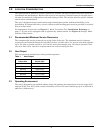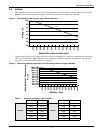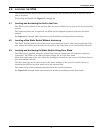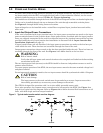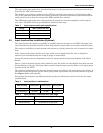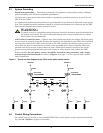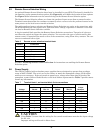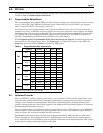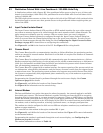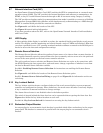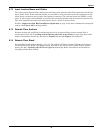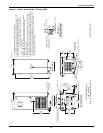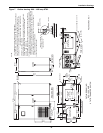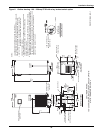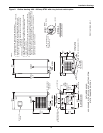
Options
14
6.3 Distribution Cabinet With I-Line Panelboard—100-600A Units Only
A distribution cabinet with a Square D I-Line panelboard offers space to plug in up to 10 three-pole
branch circuit breakers (100A-250A). The panelboard is rated at 600A with an overall short-circuit
rating of 100,000 AIC.
The full-height cabinet mounts on either the right or left side of the STS2 and is fully enclosed with a
keylock door and an accent cover that permits access to the panelboard without exposing other por-
tions of the STS2.
6.4 Input Contact Isolator Board
The Input Contact Isolator Board (ICI) provides an STS2 module interface for up to eight external
user alarm or message inputs to be routed through the static transfer switch’s alarm network. The
eight contacts are normally open dry contacts. When a contact closes, an event is triggered.
The Input Contact Isolator options are configured through the Input Contact Isolator dialog box,
which is accessed from the Comm Option dialog box on the touch screen display. You also can pro-
gram the alarm messages through this dialog box. See Configuring the Input Contact Isolator
Settings on page 95 for instructions on configuring the connections.
See Figures 21 and 22 for the location of the ICI. See Figure 25 for wiring details.
6.5 Comms Board
The Comms Board provides a communication interface to Liebert SiteScan, site monitoring product,
and/or an external or internal modem. SiteLink-12 or SiteLink-4 is required for SiteScan to communi-
cate with the STS2.
The Comms Board is equipped with an RS-422 communication port for communication to a Liebert
SiteScan monitoring system using a 2-wire twisted pair for reliable communication up to 1000 meters
(3281 feet). Information available from the RS-422 port includes the present switch status informa-
tion, all monitoring parameters, and all active alarms.
The Comms Board is equipped with a modem interface for remote reporting of the present switch sta-
tus information, alarm history information, and the history of status screens that are triggered upon
a major alarm event. The monitoring system software also supports an auto-dial feature that allows
the system to automatically dial programmed phone numbers by way of the modem to report desig-
nated alarm conditions.
Programming the Comms Board is performed through the touch screen display. See Comm
Options on page 93 for details.
See Figures 21 and 22 for the location of the Comms Board.
See Figure 26 for information on the control wiring.
6.6 Internal Modem
The Internal Modem is an option that must be ordered separately. An external modem is available
from third party sources. The Internal Modem is capable of dialing out from the STS2 or accepting
incoming calls and connecting to a remote terminal or computer. Using an ASCII Query and Answer
format the modem connection can be used to view system status and alarms. The modem provides all
information normally available on the LCD display of the STS2. No control functions are available via
the modem, such as making transfers, selecting a preferred source, or changing configurations.
The modem can also be configured to dial out two different telephone numbers (any combination of
modem or pager numbers).
The connection to this modem is through a standard RJ-11 port.
See Figures 21 and 22 for the location of the internal modem. See Figure 27 for more information
on the internal modem.
Programming the modem is performed through the touch screen display, see Configuring the
Modem on page 94 for details.
The modem commands are shown in Table 10.



